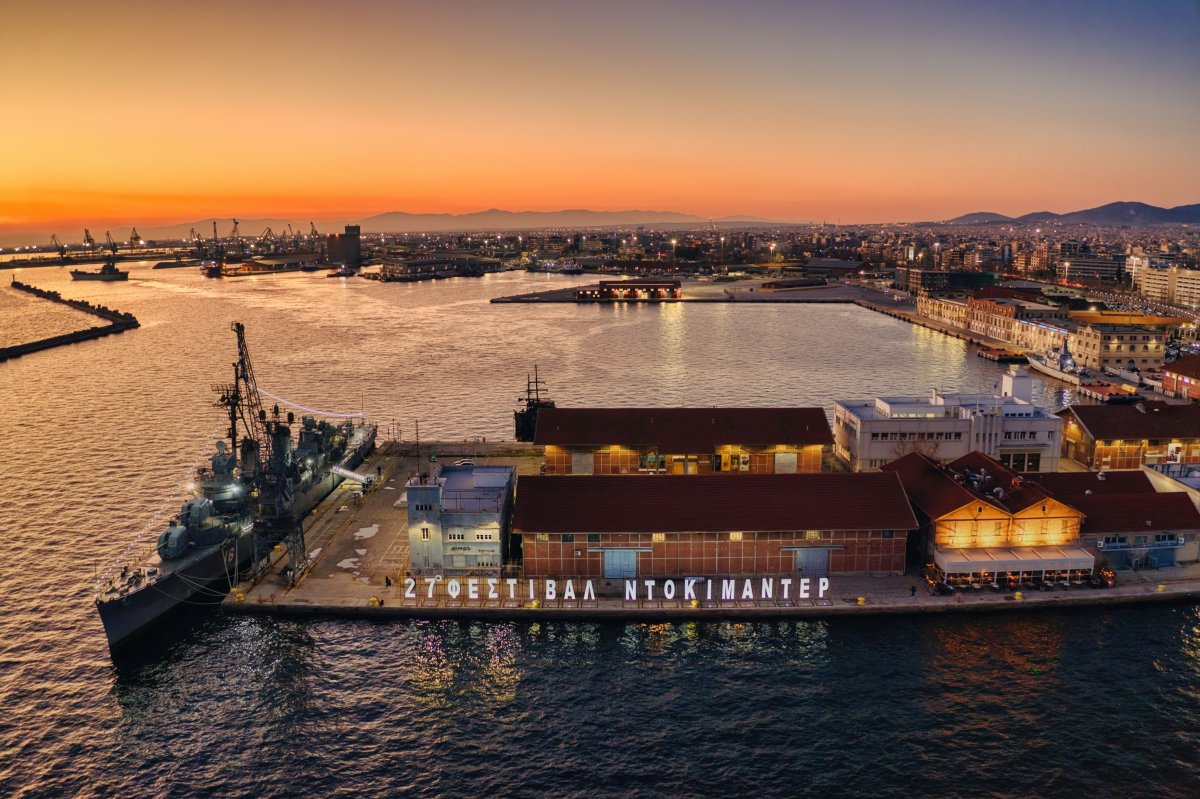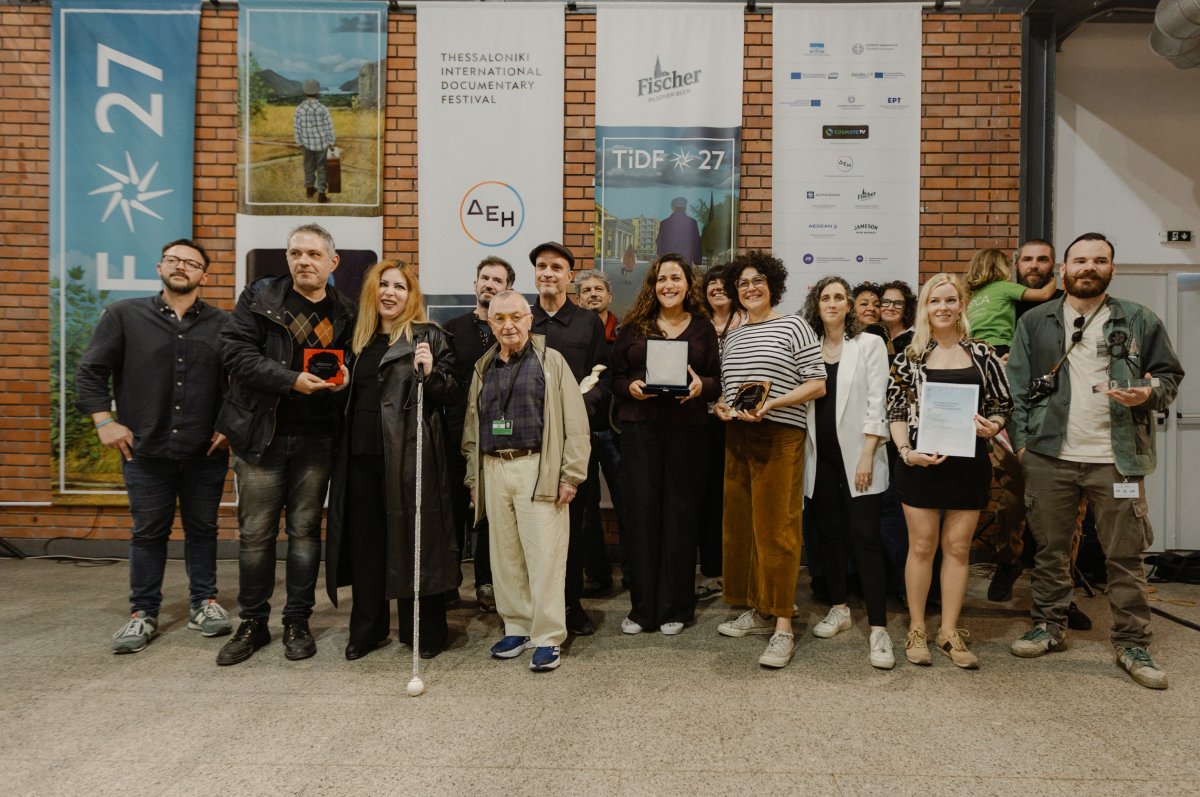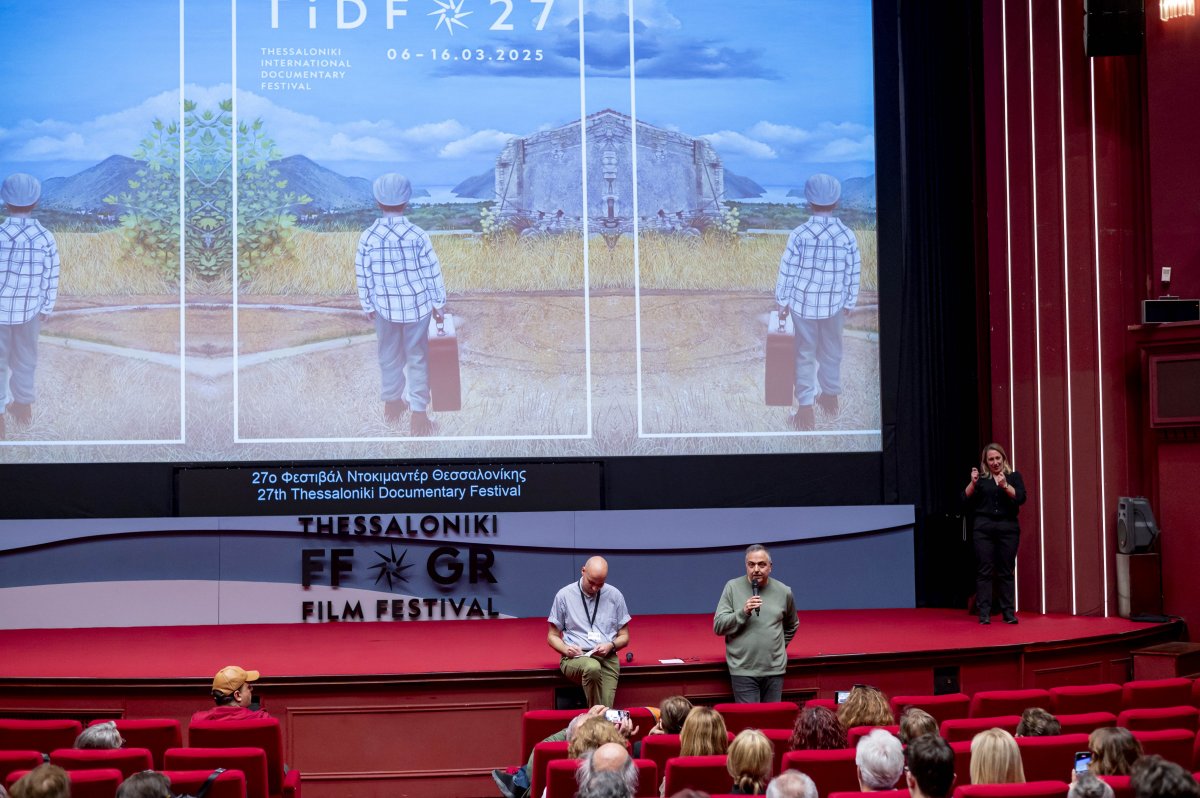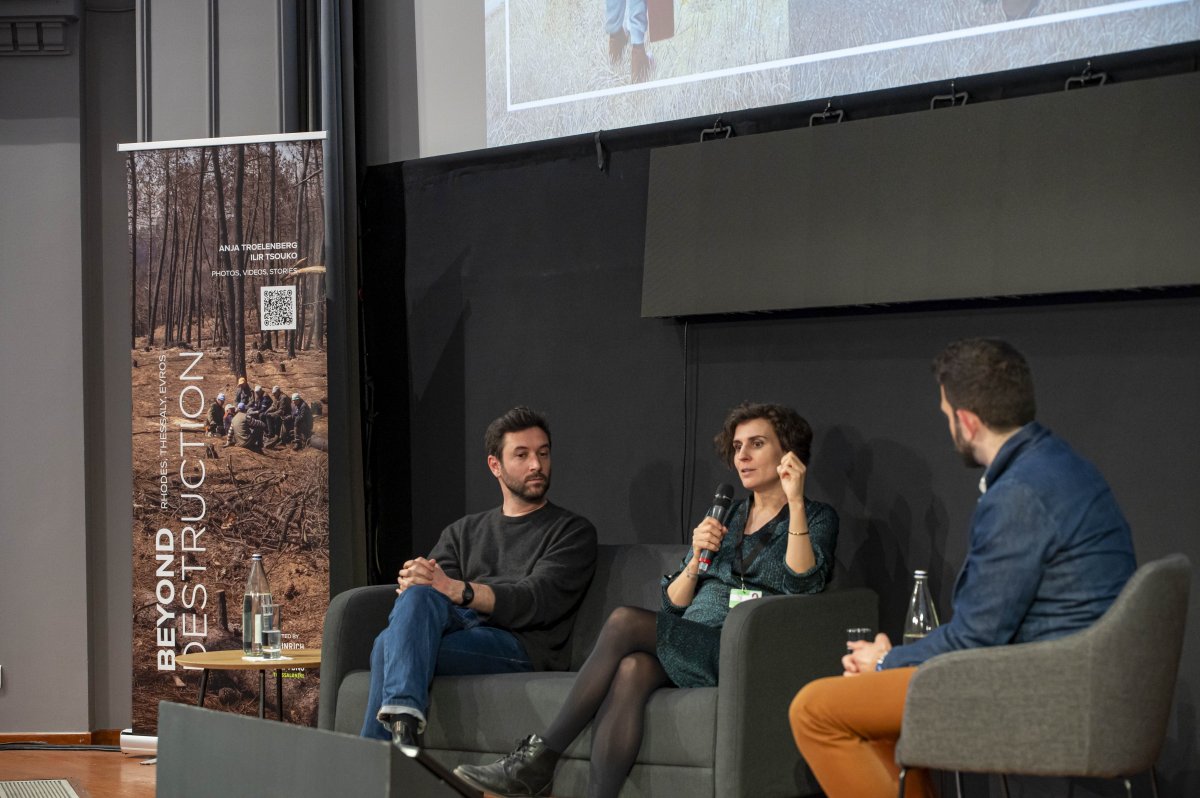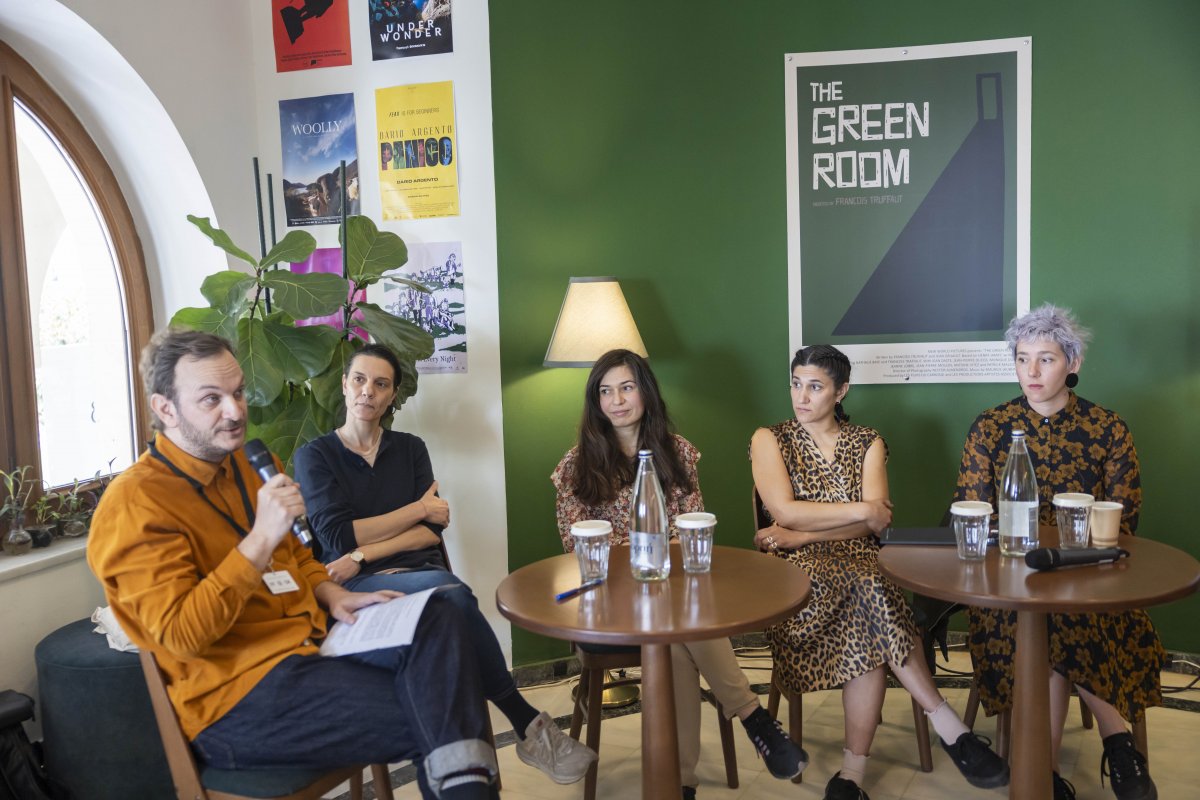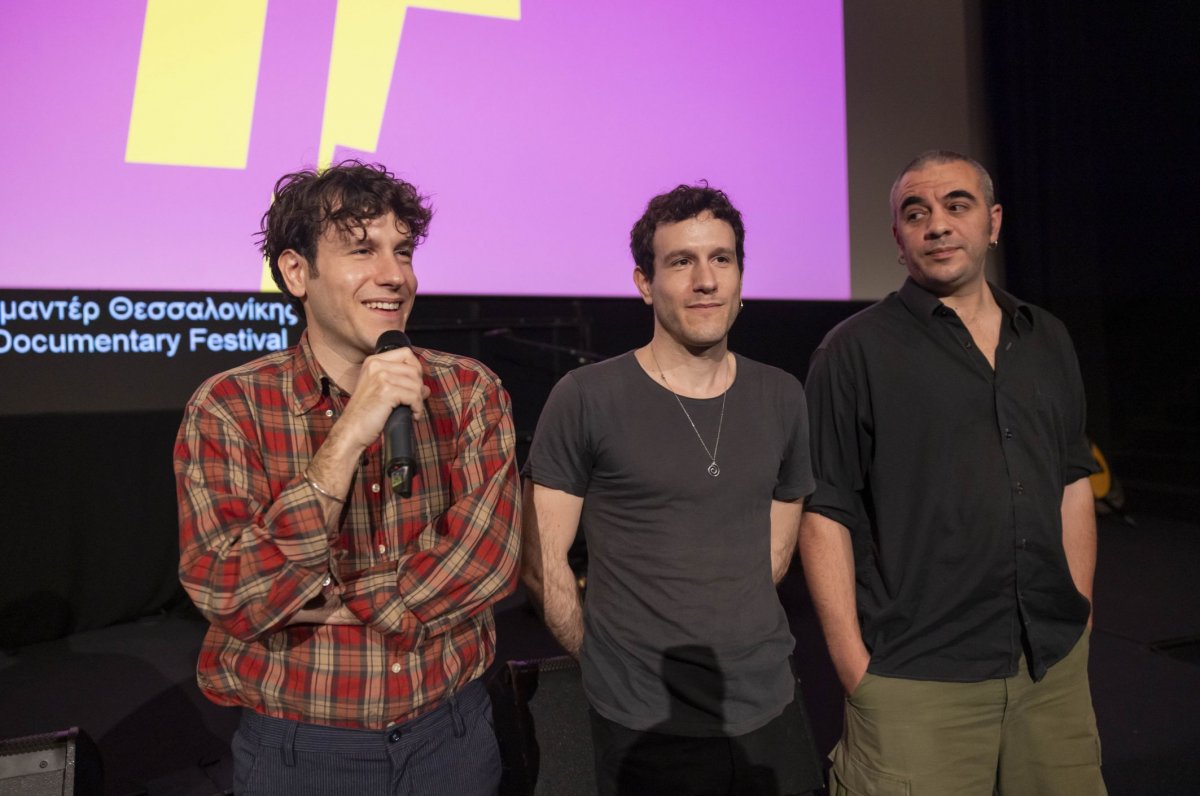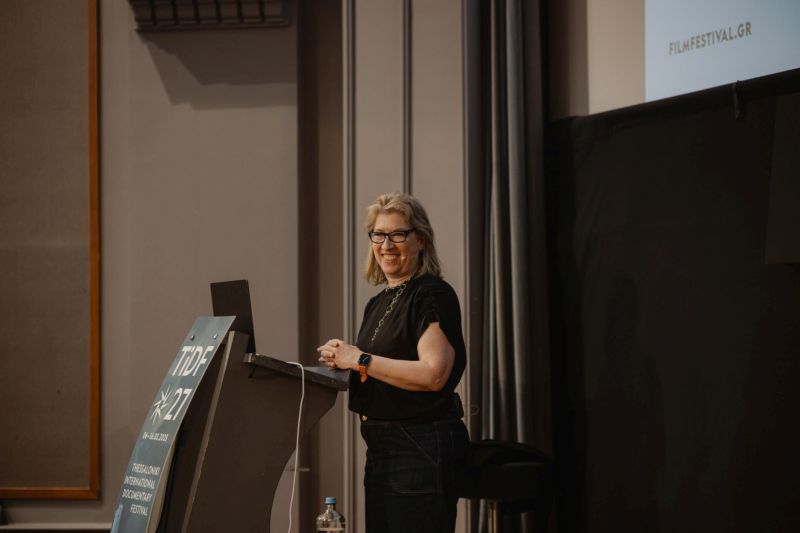DRY STONE-WALL, SUPPORTS OF THE AEGEAN / GAVDOS. SOUTHWARDS /
SULTAN AHMED HAS AWOKEN
A Press Conference was held on Sunday, March 11, 2012 by the directors Amalia Zepou, and Lydia Carras (Dry Stone-Wall, Supports of the Aegean), Anthi Daoundaki (Gavdos. Southwards) and Nicos Lygouris (Sultan Ahmed Has Awoken).
Anthi Daoundaki’s film Gavdos. Southwards describes the island through the stories of its people, during the summer when it is overrun by tourists as well as the winter, when it is deserted. Answering moderator Dimitra Nicolopoulou’s question on how long it took her to get to know the island in depth, the director noted: "We made a location scouting trip to Gavdos, and later had to spend a period of 20-25 days there in winter. We began filming and getting to know people, finally settling on those who encapsulated what we wanted to show. Then we returned twice during the summer as well as in the fall. It total, shooting lasted a year, intermittently. Regarding the community of Russian scientists she met in Gavdos, Ms Daoundaki said: "These are people who, while living in a commune at home, decided they no longer wanted to work trapped in scientific institutes on behalf of companies or the State. They left their country shortly before the fall of the regime, and having already had a great love for Greece and Pythagoras, they finally found their own paradise in Gavdos. But I feel that many of them won’t stay there very long, since they are people who love getting to know new places.” Comparing life on this small island to that of the rest of the world, the director commented that what she was looking for was a microcosm. Speaking about technological innovations (eg wind turbines) that reach the island, she noted that the locals are not familiar with technology, even though the island is especially in need of it, since electricity in Gavdos is still produced by diesel generators.
Then Nicos Lygouris spoke. In his film Sultan Ahmed Has Awoken he composes the portrait of Constantinos Fisher, a unique personality who, besides his other work, has also made a significant social contribution. Speaking of their meeting, the director referred to that “odd German that he heard lived in Chania and who had left his homeland because he couldn’t adapt to the way of life there”. Prompted by the proposal he received from ERT to make a documentary on a unique person, he decided to approach Fisher, who immediately accepted to participate. Referring to the way in which the director convinced Fisher to open up to him, Mr. Lygouris stressed: “A kind of friendship developed between us. We both speak German as well as Greek, as I live in Berlin and he lives in Greece, so we spoke in both languages, and each of us could become indignant with his own country for his own reasons. What I simply did was ask him to trust me, and he simply accepted, obviously because he wanted to”. In the film, Fisher talks about the materials he uses in the art of sculpture and in his life: “I want my materials to be one and the same with my life”. The director noted: “Constantinos is a very unique person, a kind of social monk, living by himself, like Demosthenes. I admire him when he declares that his life and his materials are one and the same, and he really means it. As Joseph Beuys says, what he seeks is to combine life with creativity. In any case, creativity doesn’t only exist in Art, but also in a lending library such as the one Constantinos has created. What he does, in the end, is to psychoanalyze himself, seeking a unity between Art and Life, while trying to get in touch with his inner child”.
The press conference ended with directors Amalia Zepou and Lydia Carras and their film Dry Stone-Wall, Supports of the Aegean. Ms Zepou spoke about the film’s beginning: “the documentary came about as a result of a program started by Lydia called ‘Cultural Pathways’ and it refers to foot trails throughout Greece. We tried to highlight these pathways and the Greek company which had undertaken their restoration work, and we took care of their preservation, cleaning and signage. We are the organizers of the preservation of this pathway shown by the documentary and not just the documentary makers. As well as the film, we also set up a workshop in order to preserve Sifnos’ pathway. But all this effort gave birth to the recording of an old art, almost Neolithic, since the technique is based solely on stone and handiwork.” Ms Zepou also confided her desire that the pathways of other islands would also be recorded, and she commented on the different words used by the locals for dry stone-walls, exactly as the Esquimo do with words for white and snow.
Lydia Carras noted the initial reservations the locals had about the young people who rushed to Sifnos to preserve and learn their ancient technique: “When the islanders saw how many young people came and how much they wanted to learn from them, they opened up and started communicating with each other using couplets and singing”. The director referred to the way both directors saw this co-existence: “Speaking of pathways and stone-walls, Amalia and I tend to see things from the point of view of a documentary maker. But what moved me is that these humble monuments, such as the stone-walls that hold back the islands’ scarce soil and have been abandoned in the last few years, have become a symbol of our society’s general erosion. The young people’s response was great, there were many who wanted to go there and do something apparently insignificant, contributing to what we mean when we say we are symbolically building something stone by stone”. Ms Zepou also stressed the difference the experience of recreating the pathway made to the tourists. “Instead of seeing the abandonment and desertion of Greece in the face of the island, they left with an optimistic feeling of regeneration”.
Amalia Zepou commented on the film Gavdos. Southwards noting that she perceived it as “a philosophical essay on man, the ‘noble savage’”. Ms Daoundaki revealed what she has retained from Gavdos: “What I hold on to is a very beautiful co-existence between the locals who have never left, living under squalid conditions, and those who are self-exiled, who have abandoned cities in different countries, looking for another meaning to life, a romantic quest”. And she added: “It’s impressive how these different worlds try to communicate. However, the violent tourist development factor still exists, as the locals abandon their traditional occupations, while the foreigners are those who oddly enough try to bring them back to the old way of thinking”. Speaking on her inspiration, Ms Daoundaki stated: “I had entered a phase of searching, a la Rousseau, much like many of the others I met. It isn’t just a question of whether there will be hunger in the cities because of the crisis and our needing to return to the villages; it is that you begin to see what is really necessary”.
Referring to what he has kept from his meeting with Constantinos Fisher, Mr. Lygouris spoke about the “four commandments of Constantinos to himself: to help others and to learn from them, to embrace and allow yourself to be embraced, to live on very little and keep turning the kaleidoscope of your life to the very end. The purpose is to have meaningful contact with others, forget your ego and open up to people”.
Lydia Carras commented on the conversion of the Sifnos locals after seeing the response from strangers to the pathways and art of the dry-stone. “We all experience the crisis in our own way. In the islands they feel even more vulnerable and dependent. The fact that young people went there and were interested in something as important to them as the pathways, made them gain courage and be truly happy. Afterwards, they were saying how beautiful our island is. This magic and beauty became apparent to them when they realized they live in a place that is truly valuable”.
Among other 14th TDF activities, all the Greek films of the 14th TDF program are funded by the European Union - European Regional Development Fund under the Central Macedonia ROP 2007-2013.





